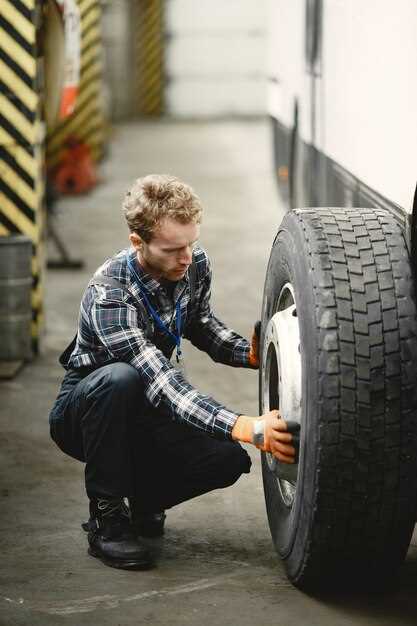
Maintaining your vehicle’s tires is crucial for ensuring safety, optimizing performance, and extending overall lifespan. One essential aspect of tire maintenance is the process of tire rotation. Proper tire rotation helps in evenly distributing wear patterns across all tires, promoting balanced handling and improving fuel efficiency.
Understanding the techniques for effective tire rotation can significantly impact your driving experience. Different vehicles have unique rotation patterns depending on factors such as drivetrain configuration and tire design. This guide will explore the various methods of tire rotation, highlight when and how often to perform this maintenance task, and discuss the benefits it brings to your vehicle’s longevity.
Additionally, improper tire rotation can lead to uneven wear, which may compromise traction and significantly increase the risk of tire failure. By following the recommended techniques outlined in this guide, you can ensure that your tires wear evenly and maintain optimal performance throughout their lifespan. Let’s delve into the essential practices for effective tire rotation.
Understanding Tire Wear Patterns and Their Implications

Tire wear patterns are crucial indicators of vehicle health and performance. By analyzing these patterns, drivers can gain insights into potential issues and take preventive measures to ensure safety and efficiency.
Common tire wear patterns include:
- Center Wear: This pattern occurs when the tread in the center of the tire is more worn than the edges. It typically indicates overinflation, which can reduce contact with the road and lead to decreased traction.
- Edge Wear: When the outer edges of the tire show more wear, this may suggest underinflation or improper wheel alignment. Such conditions can affect steering control and compromise safety.
- Uneven Wear: Variations in wear across the tire surface can arise from misalignment, suspension issues, or tire imbalance. This irregularity can cause vibrations, poor handling, and reduced tire lifespan.
- Cupping: Cupping appears as scalloped or dish-shaped depressions on the tread. It often points to worn suspension components, leading to a rough ride and excessive noise.
- Patch or Spot Wear: Localized wear can indicate specific issues such as a bent wheel or damaging road conditions. This type of wear requires immediate inspection to avoid further damage.
Recognizing these patterns is essential for proactive vehicle maintenance. Drivers should consider the following steps:
- Regularly inspect tires for noticeable wear patterns and abnormalities.
- Ensure proper tire inflation according to manufacturer recommendations.
- Check wheel alignment and balance regularly to prevent uneven wear.
- Rotate tires as recommended, usually every 5,000 to 8,000 miles, to promote even wear.
- Perform regular vehicle inspections including suspension and steering components.
Understanding tire wear patterns helps in maintaining optimal driving performance and prolonging tire life. Addressing any identified issues promptly can prevent costly repairs and increase safety on the road.
Recommended Tire Rotation Patterns for Different Vehicle Types
Proper tire rotation is essential for maintaining tire longevity and ensuring optimal vehicle performance. Different vehicle types require distinct rotation patterns due to variations in drivetrain layouts and weight distribution.
Front-Wheel Drive Vehicles: For front-wheel drive cars, a common rotation pattern is the “forward cross.” In this method, the front tires are moved directly to the rear, while the rear tires are shifted to the front but swapped from side to side. This pattern helps compensate for the greater wear on the front tires caused by steering and power delivery.
Rear-Wheel Drive Vehicles: For rear-wheel drive vehicles, the recommended pattern is often the “rearward cross.” This involves moving the rear tires directly to the front while the front tires are rotated to the opposite sides at the rear. This method helps balance wear across all four tires, improving traction and handling.
All-Wheel Drive Vehicles: All-wheel drive systems often benefit from the ” X-pattern” rotation. In this approach, the front tires are swapped diagonally to the rear, while the rear tires are moved diagonally to the front. This pattern helps accommodate the unique stress distribution in all-wheel drive setups, ensuring even wear across all tires.
Performance and Sports Cars: For performance vehicles, a specialized rotation pattern may be necessary. Often, these cars feature staggered tire sizes (different widths between front and rear). In such cases, it is advisable to follow the manufacturer’s recommendations, as swapping tires can impact handling and traction significantly.
Light Trucks and SUVs: For light trucks and SUVs, a common rotation practice is the “triangle” pattern, where the front tires are moved to the opposite rear positions, and the rear tires are moved to the front without crossing over. This rotation maintains the stability and grip that these vehicles require, especially when carrying heavier loads.
In all cases, it is crucial to follow the vehicle manufacturer’s guidelines and recommendations for tire rotation to achieve the best performance and tire life.
Tools and Tips for Performing a DIY Tire Rotation

Before starting a DIY tire rotation, gather the necessary tools to ensure a safe and effective process. Below is a list of essential tools:
- Jack: A hydraulic or floor jack is crucial for lifting the vehicle.
- Jack Stands: Always use jack stands to support the vehicle once elevated, preventing accidents.
- Lug Wrench: An appropriate-sized lug wrench is needed to remove and tighten wheel nuts.
- Tire Pressure Gauge: To check and adjust tire pressure after rotation.
- Wheel Chocks: Place these behind the rear tires to prevent the vehicle from rolling during the rotation.
Once you have the right tools, follow these tips for a successful tire rotation:
- Refer to Owner’s Manual: Different vehicles may have specific rotation patterns. Consult the manual for recommendations.
- Rotate Tires Regularly: Aim to rotate your tires every 5,000 to 8,000 miles, or as recommended by the manufacturer.
- Inspect Tires: While rotating, inspect tires for uneven wear, punctures, or other damage that may need addressing.
- Tighten Properly: After replacing the tires, use the lug wrench to tighten the nuts in a star pattern to ensure even pressure.
- Check Tire Pressure: After rotation, verify and adjust the tire pressure to match the recommended specifications.
By using the right tools and following these tips, you can perform a tire rotation safely and effectively, extending the lifespan of your tires and improving vehicle performance.

